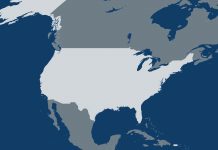Devoted readers will recall what I wrote in my most recent book, “The Storm Before the Calm,” and in subsequent articles here on GPF: that the United States operates on two cycles, one a 50-year socio-economic cycle, the other an 80-year institutional cycle. For the first time in history, both are coming full circle at the same time.
To recap, the first institutional cycle, which established a federal government, began with the American Revolution and concluded with the Civil War, ending in 1865. The second institutional cycle, which established the federal government’s authority over the states, ran from the Civil War to World War II. We are now nearing the end of the third institutional cycle, which has expanded the federal government’s authority over the economy and society. All cycles are built to render the previous one obsolete.
In WWII, U.S. power triumphed because of the knowledge of experts – including those who quickly and effectively restructured the military – whose expertise was subsequently regarded as the foundation of government and all other corporate entities. The government saw itself as an instrument for shaping and regulating policies ranging from medicine to commercial fishing. Its success in WWII was all the validation it needed.
There were challenges to this presumption, of course. The government was so compartmentalized that the unintended consequences on sectors outside the purview of a given project would cause failures, and that unifying all sectors under one umbrella created vast destruction, particularly because the government was neither time- nor cost-sensitive. Experts operated at one level; producers operating outside of the government approached it at another. A relevant example concerns herring, of all things. Government experts were able to monitor commercial herring fishermen, endowing them with the authority to enforce how many fish were caught and compel the fishermen to pay them for the pleasure of observing them.
This harkens back to the 1984 Chevron case in which the Supreme Court ruled that the government’s executive agencies and their experts could interpret federal statutes. At the time, it was argued that the government was both competent and immune to personal benefit. This was seen as untrue; bureaucratic and internal battles frequently influenced decisions, and in setting prices, the government drove prices up. The desire to be equitable did not necessarily achieve the goal. The counterargument was that commerce without indifferent oversight does not take into consideration product safety or logic of cost and creates expensive inefficiencies. To a large degree, government regulation, by experts or others, created uncertainties in the marketplace with potentially poor thinking, frequently leaving no avenue of complaint at all, or at an affordable price.
What had been rational during WWII was challenged over a regulation concerning fish. The fishermen had the resources to challenge them. The Supreme Court ruled last week in favor of the fishermen and against government regulators. In a more radical sense, it ruled that the regulation of the federal government had to be made by courts through the standard system.
It appeared to be a shocking ruling to many who regard government regulation as essential and who oppose the idea of leaving it to inexpert judges. For me, the attack on the institution of expert government was a predictable shift at the end of this institutional cycle and now leaves us to look at the social and economic shifts also underway. So far, the cycles are playing out the way we predicted.






